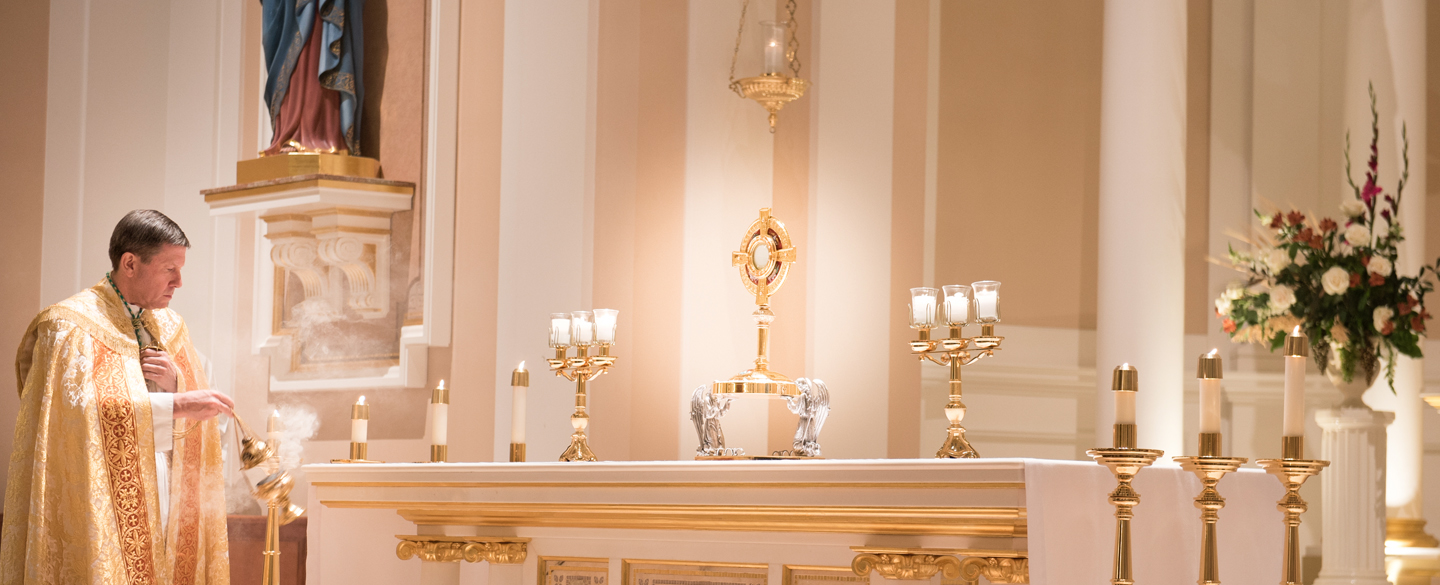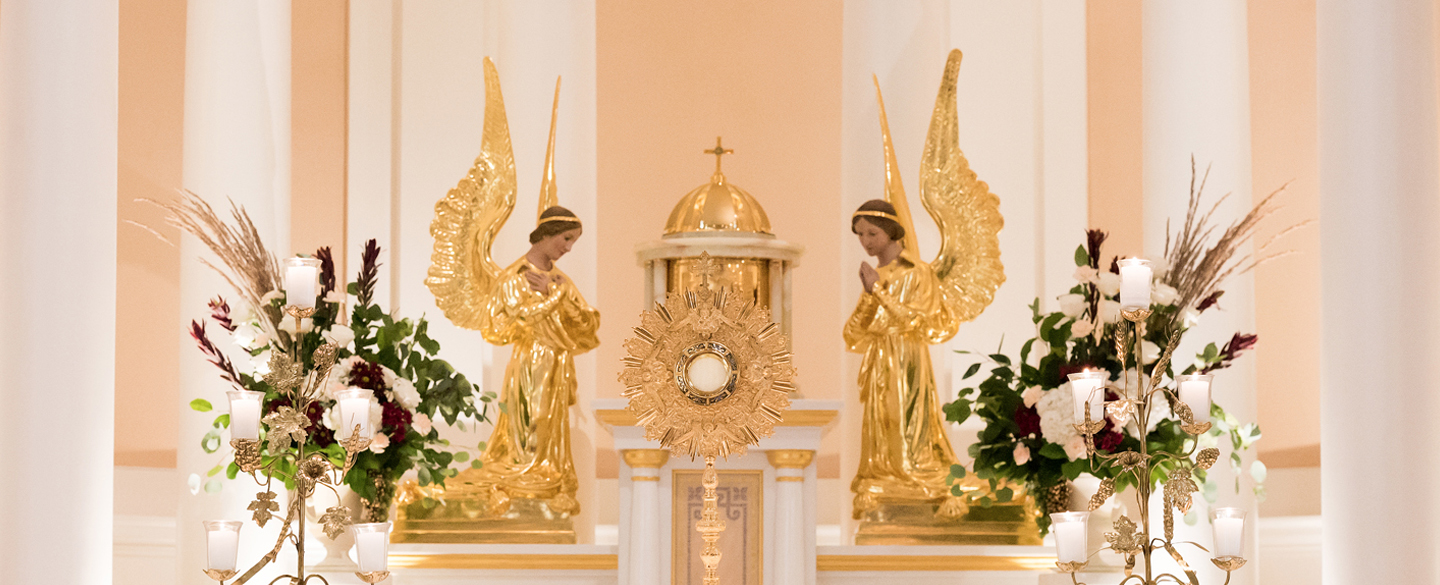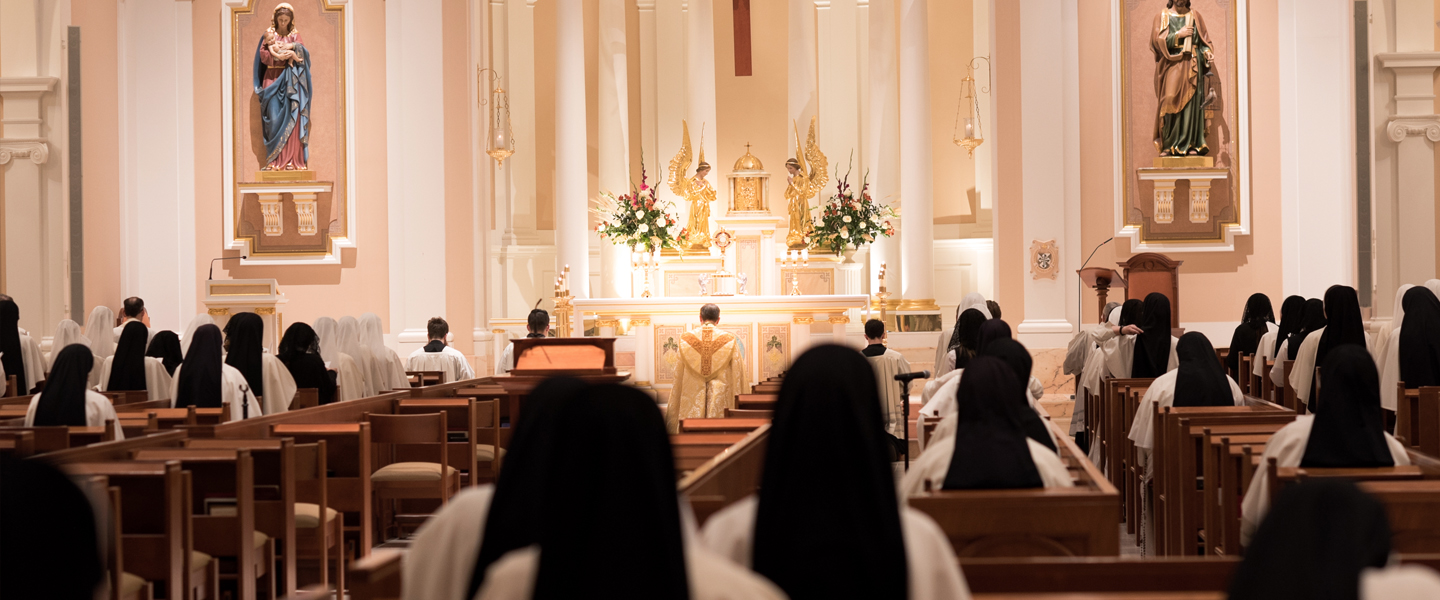
Let us ask ourselves, in adoring Christ who is really present in the Eucharist: do I let myself be transformed by him? Do I let the Lord who gives himself to me, guide me to going out ever more from my little enclosure, in order to give, to share, to love him and others? (Pope Francis, Homily for Corpus Christi 2013)

The Forty Hours Eucharistic Devotion manifests the most powerful fact of Christianity, Christ’s Eucharistic Presence, with a rich variety of expressions: exposition of the Blessed Sacrament, Benediction, prayers and processions.
Two outstanding developments in Eucharistic devotion during the Middle Ages contributed to the creation of the Forty Hours Devotion. The first occurred in 1264, when the Feast of Corpus Christi was extended to the Universal Church. It had previously been celebrated only in the diocese of Liège, Belgium, inspired by a nun’s vision in 1210. The Feast of Corpus Christi popularized Eucharistic processions. The second step was the official inauguration of the Forty Hours Devotion in Milan in 1530. St. Philip Neri and St. Ignatius Loyola adopted the devotion in reparation for sin. Pope Clement VIII assigned the devotion in turns to all the churches of Rome.
St. John Neumann, fourth bishop of Philadelphia, brought the Forty Hours Devotion to the United States. In a time of strong anti-Catholic sentiment, he created a program for his diocese so that all the churches could participate in Forty Hours. He composed a liturgical text to go with the devotion and arranged for indulgences to be made available participants.
The Forty Hours Devotion was once observed by the entire city of Nashville, with different parishes taking turns hosting the three day celebration. St. Cecilia Congregation was assigned to the weekend of the Baptism of the Lord, which we still honor today.
The devotion begins with exposition of the Blessed Sacrament, Benediction, and the Litany of the Saints. A procession follows, with the Blessed Sacrament accompanied by incense. The procession recalls Christ’s presence with us during our earthly journey. During the procession, the Lord in the monstrance is held high by the priest, recalling the Lord’s prophecy, “The Son of Man must be lifted up” (John 3:14). For forty hours, spread over three days, the Blessed Sacrament is exposed on the altar. On the third day, solemn Vespers, another procession, the litany and a closing benediction completes the celebration. Each year, priests from the Nashville Diocese are invited to the Motherhouse to share in this time of prayer and celebration with the community in praise and thanksgiving for so great a gift.


 Back
Back